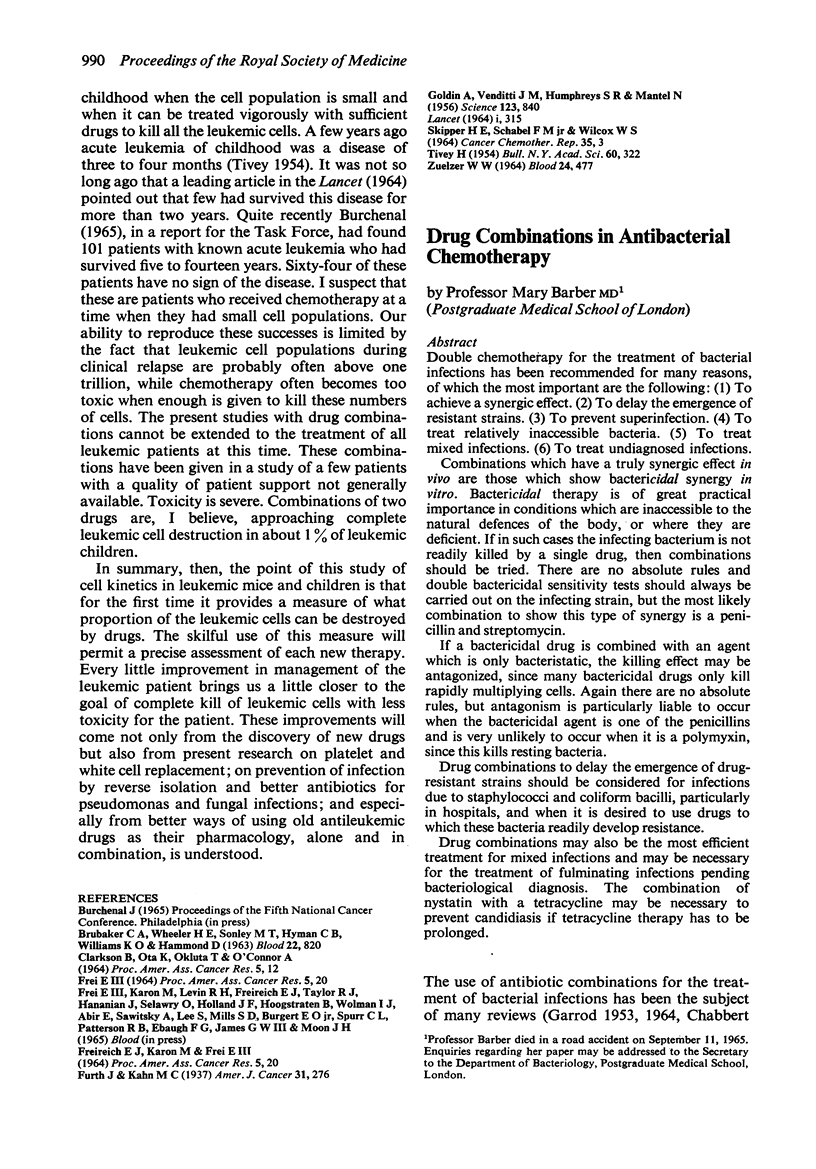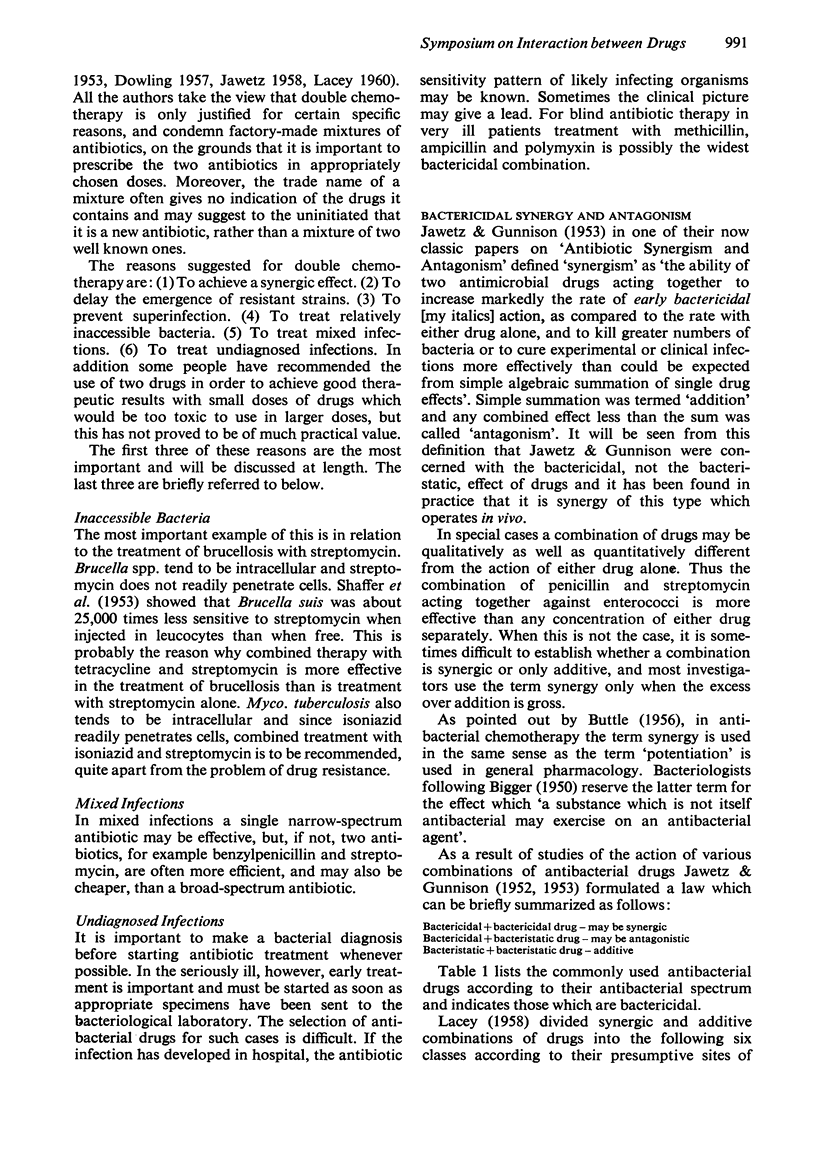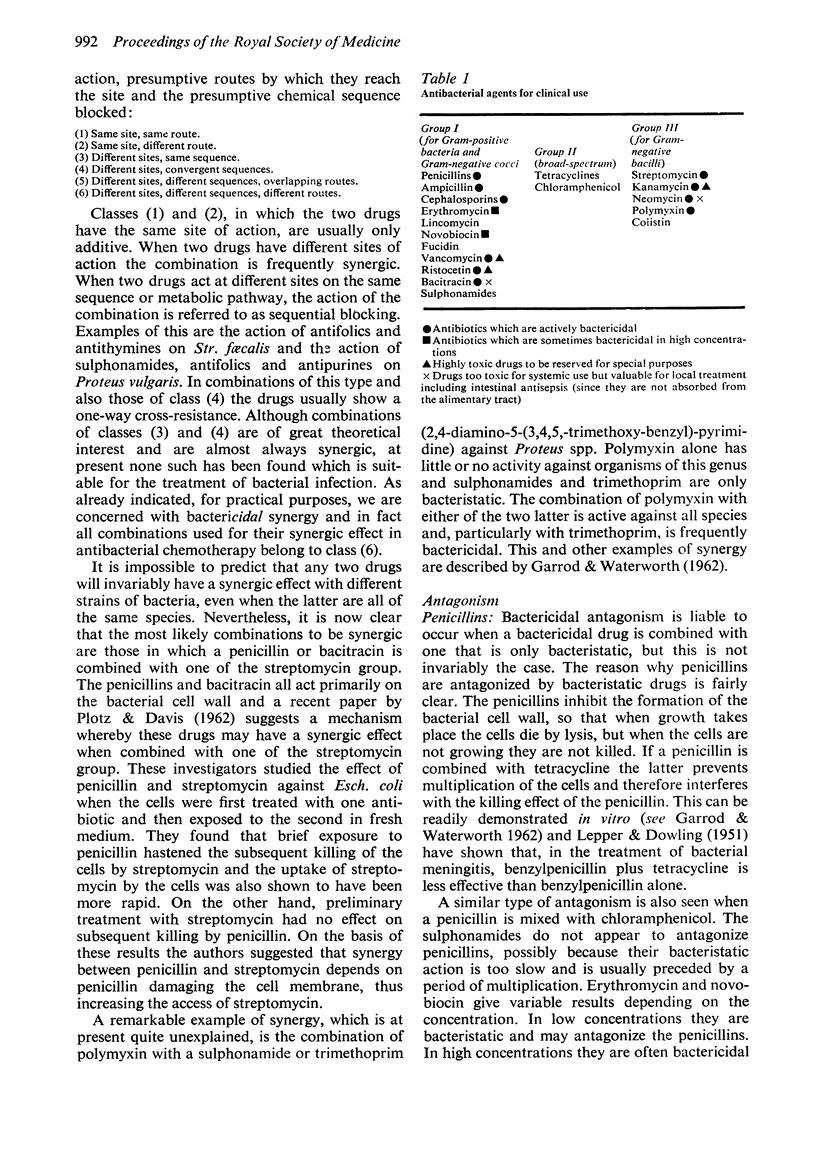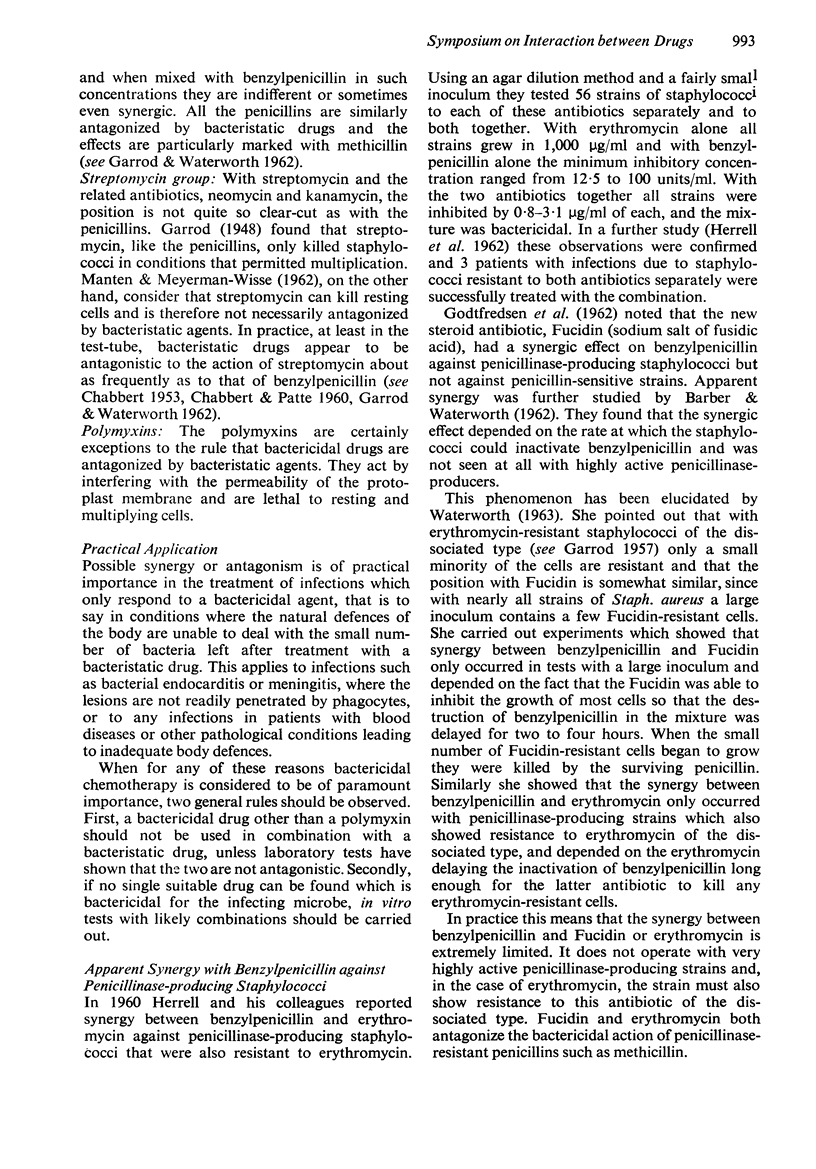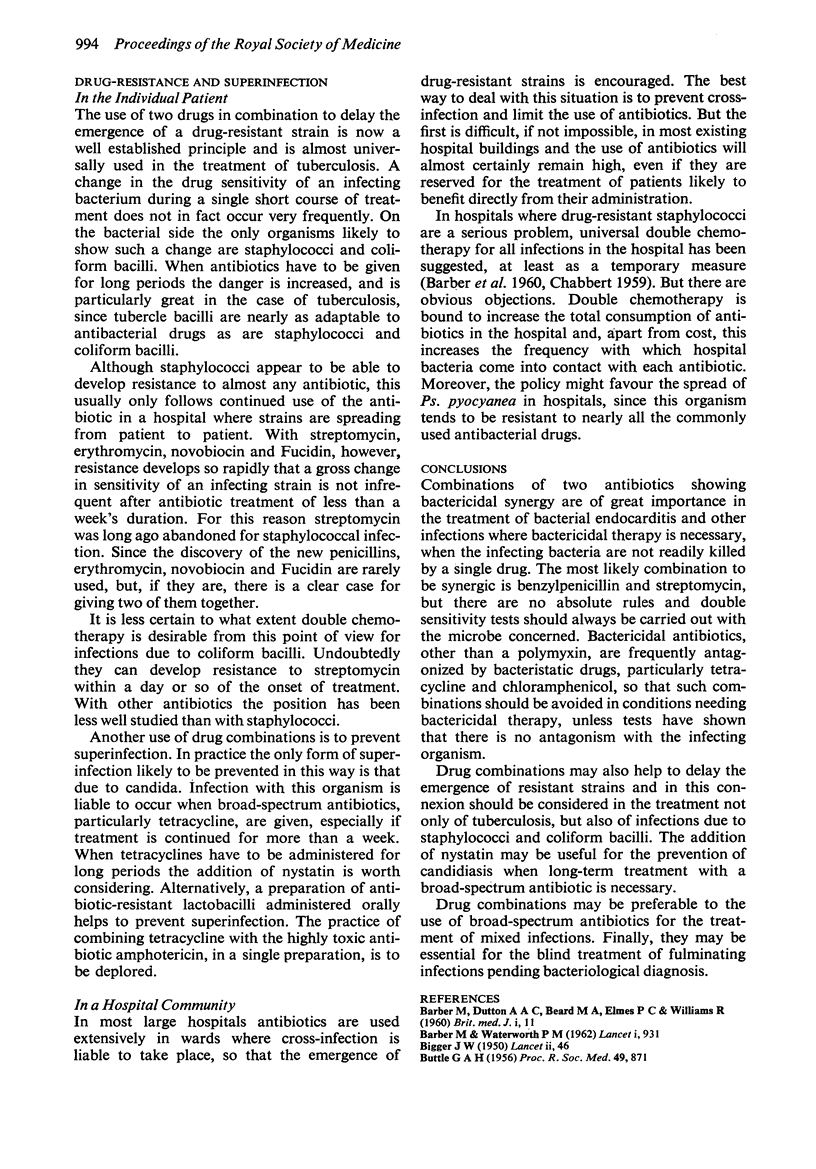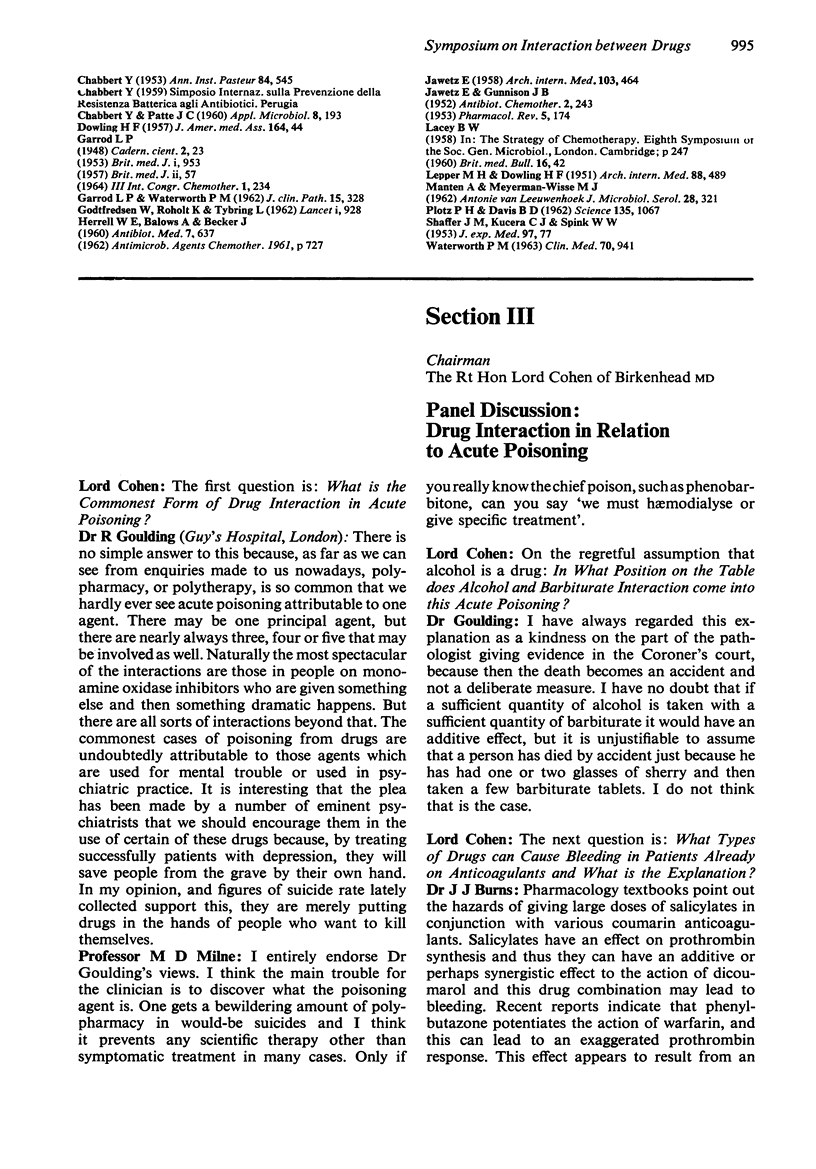Abstract
Double chemotherapy for the treatment of bacterial infections has been recommended for many reasons, of which the most important are the following: (1) To achieve a synergic effect. (2) To delay the emergence of resistant strains. (3) To prevent superinfection. (4) To treat relatively inaccessible bacteria. (5) To treat mixed infections. (6) To treat undiagnosed infections.
Combinations which have a truly synergic effect in vivo are those which show bactericidal synergy in vitro. Bactericidal therapy is of great practical importance in conditions which are inaccessible to the natural defences of the body, or where they are deficient. If in such cases the infecting bacterium is not readily killed by a single drug, then combinations should be tried. There are no absolute rules and double bactericidal sensitivity tests should always be carried out on the infecting strain, but the most likely combination to show this type of synergy is a penicillin and streptomycin.
If a bactericidal drug is combined with an agent which is only bacteristatic, the killing effect may be antagonized, since many bactericidal drugs only kill rapidly multiplying cells. Again there are no absolute rules, but antagonism is particularly liable to occur when the bactericidal agent is one of the penicillins and is very unlikely to occur when it is a polymyxin, since this kills resting bacteria.
Drug combinations to delay the emergence of drug-resistant strains should be considered for infections due to staphylococci and coliform bacilli, particularly in hospitals, and when it is desired to use drugs to which these bacteria readily develop resistance.
Drug combinations may also be the most efficient treatment for mixed infections and may be necessary for the treatment of fulminating infections pending bacteriological diagnosis. The combination of nystatin with a tetracycline may be necessary to prevent candidiasis if tetracycline therapy has to be prolonged.
Full text
PDF